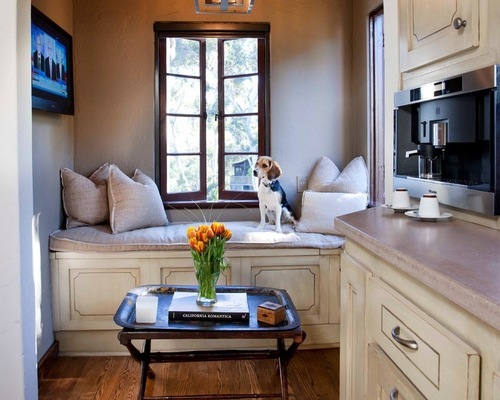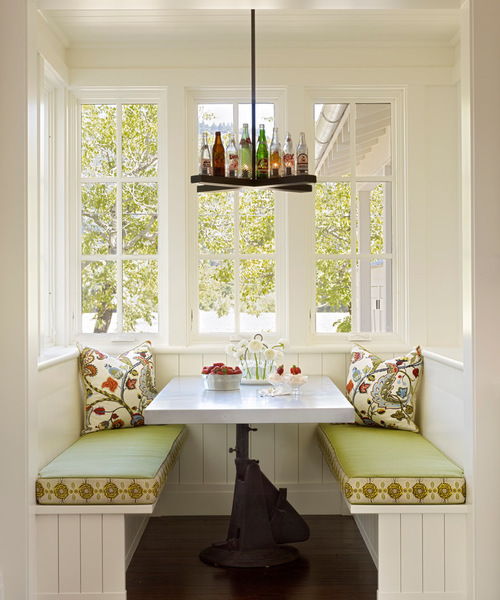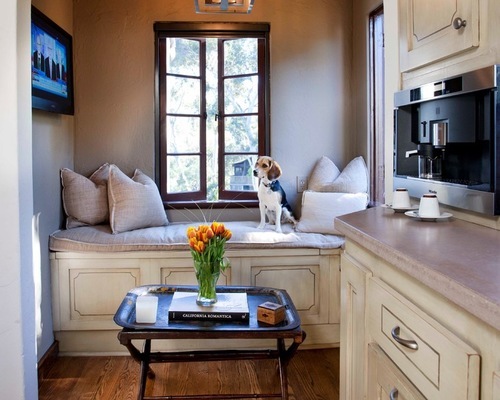Passing the midway point of a remodel can be an exciting time. After weeks (or months, but hopefully not years) of being in a state of disarray, things finally start to feel as if they’re coming together.
You’ve experienced the fast-paced bliss of the Honeymoon. You’ve trudged through the slowdown that comes with the Midproject Crisis. And now? Now you’re ready to gaze lovingly into your contractor’s eyes again.

Vows 1: Priority 1 Project Management, original photo on Houzz
Everything you’d hoped and dreamed about when you first envisioned your project is coming true, and you’re feeling ready to say “I do” all over again. It’s time for the remodeling phase I like to refer to as the Renewal of Vows.
You probably won’t hear your contractor refer to this phase as such (but how fun would that be?). Just as the Midproject Crisis is more commonly referred to as the mechanical rough-in stage, this phase has other, more industry-standard names. You will probably hear words like “finish out,” “trim out,” “mechanical trims” or “finishes.”
And, as you can probably guess, this phase is about finishing and beautifying the work that was started in the first couple of months. There’s a lot that may (or may not) be involved in the finish stage of your job, depending on your scope of work, but here’s a list of the most common steps that happen during this phase.

Vows 2: Traci Connell Interiors, original photo on Houzz
- Sheetrock. Holes made during rough-in will be patched, new Sheetrock will be put up at any new walls or ceilings, and texture will be applied to make your walls look like walls again.
- Trim carpentry. There are a few different types of trim that may be installed at this phase: baseboard (which runs along the joint where the bottom of a wall meets the floor), door and window casing (which is installed around the perimeters of doors and windows) and crown molding (which is run along the joint where the top of a wall meets the ceiling). Trim is purely optional — some more contemporary designs forgo it entirely — but it is meant to create a finished, unified look.

Vows 3: TOTAL CONCEPTS, original photo on Houzz
- Cabinetry. The installation of cabinetry is usually around the time when I see a little glimmer come back into a homeowner’s eyes. This is when the kitchen starts looking more like a kitchen, but it’s also when you can visualize how your other storage pieces, such as built-ins and bathroom cabinets, will change the function of your home.
Related: Shop for Kitchen Cabinets
- Electrical and plumbing trim. This is the other big “wow” that comes with the finish-out phase. A master bathroom can start to look completed when tile and cabinetry is installed, but throw in a freestanding tub and a shower full of rain heads, handheld fixtures and a steam unit, and suddenly you’re not looking at a mostly done, unidentifiable space — you’re looking at your master bathroom.
The same goes for electrical items like decorative light fixtures or appliances. Seeing new stainless steel (or whatever your preferred finish is) appliances being brought into and installed in your kitchen make most people go starry-eyed and drool a little. No judgment here — I’ve done the same.
Vows 4: DKOR Interiors Inc. – Interior Designers Miami, FL, original photo on Houzz
- HVAC trim. I mentioned in the last installment that most HVAC work is done during the rough-in stage, so what is left? Essentially, all that needs to be done is the installation of vent covers and thermostats and maybe a little tweaking of the air-conditioning system. Nothing too exciting, but it should be noted nonetheless.
- Miscellaneous. Like I said, there is a lot that can be going on during the trim-out stage. Flooring — such as carpet, wood, tile or laminate — will be installed. (Flooring installers are known for insisting that they be the absolute last people to work on a house.)
Tile will go up in showers and as backsplashes. Countertops will go in. Priming and painting of walls, ceilings, trim and cabinetry will be completed. A little landscaping may even be done.
Vows 5: Viyet Luxury Consignment, original photo on Houzz
There are a million moving parts during the mechanical finishes phase. And I admit, as a homeowner and general contractor, this is exciting to see.
Just like during the Honeymoon, a lot of visibly quantifiable work is being completed. Only this time, instead of things being torn up and thrown out, they’re being brought in and installed. The puzzle pieces are finally fitting together, and you are starting to see the big picture. (Dreamy sigh.)
I’ve harped repeatedly about how communication is key, and this still rings true during the Renewal of Vows stage. But patience is also important.
As you see new things being carried in and installed, it can be so tempting to begin moving back into your new space or using your new kitchen. But your contractor may still need some time and space to work.
There are last-minute items that will ultimately guarantee your satisfaction that need to be taken care of before you and your family can begin enjoying your new remodel. So hang in there, and your patience will be rewarded.

Vows 6: Jay Jeffers, original photo on Houzz
You may be thinking: There can’t be anything left, can there? That’s it, right? Everything is installed, the house looks like a house again, time to move in and get settled. Not so fast. You’re almost there. Find out what final bits and pieces are involved in the end phase of a remodel, what I like to call the Happily Ever After stage.
By Hannah Kasper, Houzz
 Facebook
Facebook
 X
X
 Pinterest
Pinterest
 Copy Link
Copy Link



